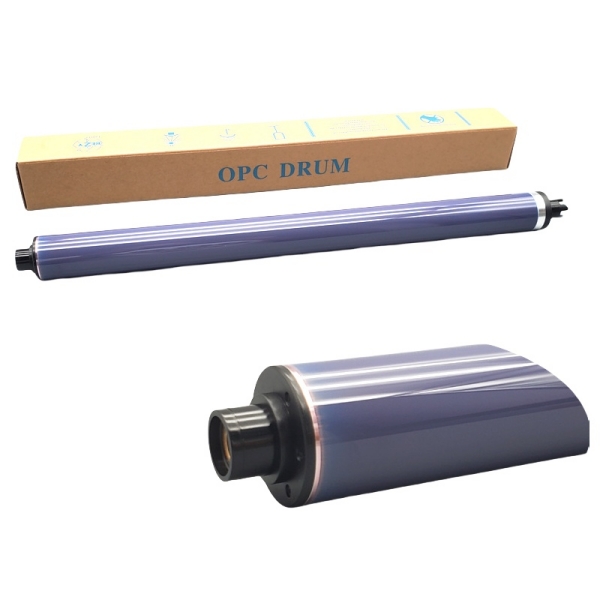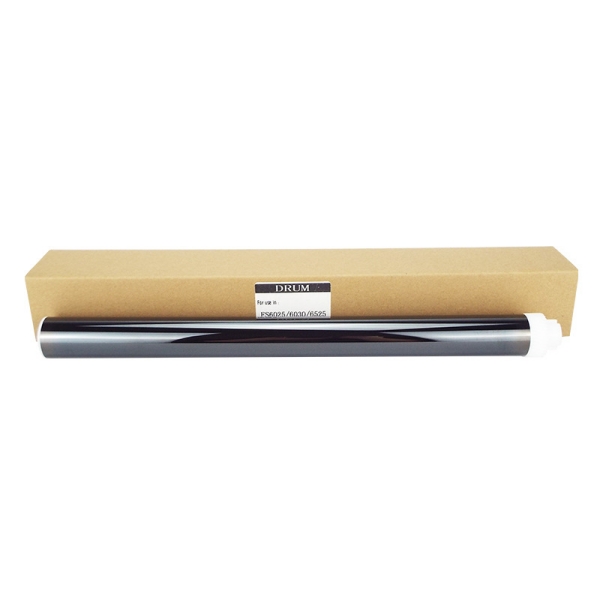The photosensitive drum is an accessory in a laser printer, also known as Organic photoconductor drum or OPC drum. The main function of the photosensitive drum is to form an image during the printing process, so the quality of the photosensitive drum determines the printing quality to a large extent.
The working principle of the photosensitive drum is to scan the surface of the photosensitive drum with a laser to form a latent image, then spray toner and adsorb the toner on the latent image through static electricity, and finally transfer the toner image to the paper through the transfer process to complete the printing.
When the photosensitive drum reaches the end of its life, the photosensitive material on its surface will wear or age, resulting in a decrease in the quality of the printed image, which may cause blurring, uneven colors, and other problems.
A photosensitive drum is composed of a basic substrate made of aluminum and a photosensitive material coated on the substrate.
According to the different photosensitive materials, we divide it into three types: OPC drum (organic photoconductive material), Se drum (selenium) and ceramic drum (a-Si ceramic).

Since Se drums are more harmful to the environment, they have been basically eliminated. At present, the mainstream photosensitive drum materials are OPC drums and ceramic drums. Most of the mid-to-low-end printers on the market are mainly using OPC drums.
OPC drums have three layers, the first layer is an aluminum tube, the second layer is an insulating layer, and the third layer is a photosensitive layer. This is the type of photosensitive drum with the highest market share. Brands such as: HP, Canon, Brother, Ricoh, Konica Minolta, Toshiba, Fuji Xerox, and Sharp all use OPC drums.
The life of OPC drums is relatively short. They are generally used for home laser printers, and the life is only a few thousand sheets. The lifespan of high-quality OPC drums is also very long, ranging from 50,000 to 100,000 sheets, but they are still much shorter than ceramic drums.
The surface of ceramic drum is composed of four to five layers of materials. That’s why ceramic drums have a long lifespan. However, they are expensive and are generally suitable for high-end laser printers, mainly used by Kyocera.
Ceramic drums mostly with a lifespan of hundreds of thousands of sheets. Of course, the requirements for toner are very high, and inferior toner can easily cause ceramic drums to malfunction.
In general:
The lifespan of ceramic drums is far longer than that of OPC drums, but they have high requirements for toner, and must use original or high-quality compatible toner.
OPC drums have a short lifespan, but they have low requirements for toner, and the low cost can effectively reduce the cost of use.



Leave A Comment